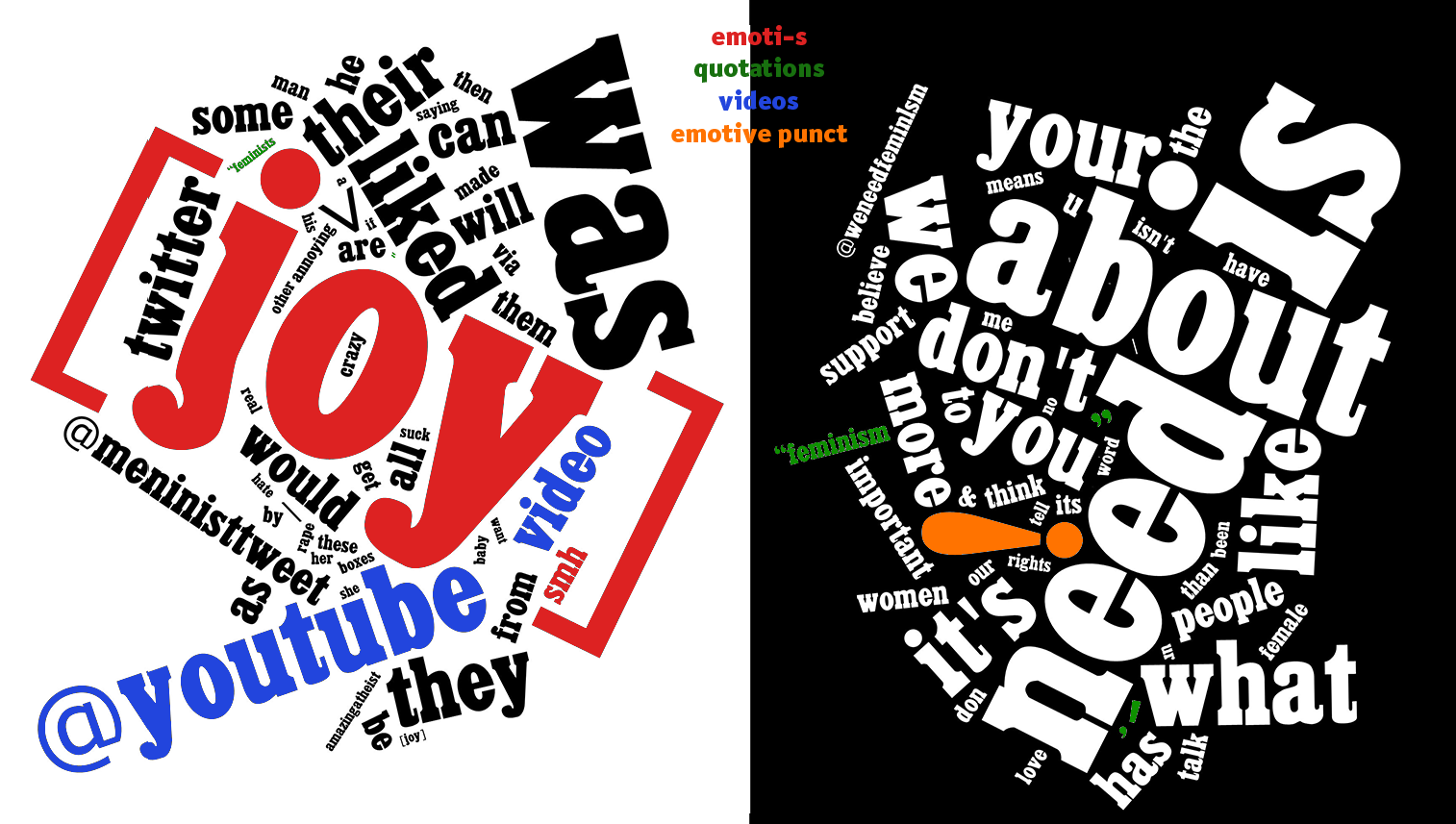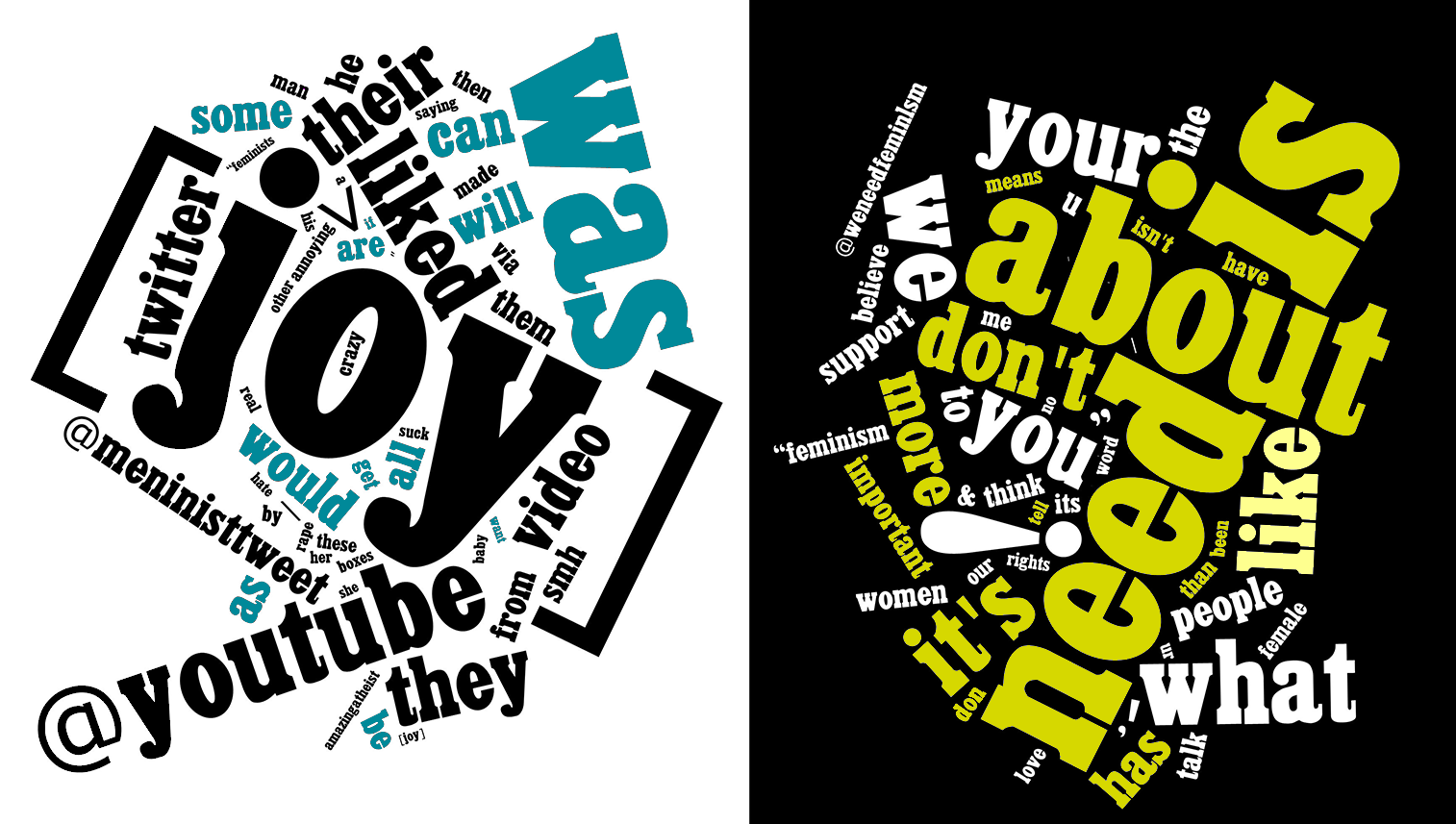Attitude analysis and corpus analytics of 1M tweets about feminism (summary)
By David Taylor
Attitude analysis and corpus analytics of 1M tweets about feminism (summary)
Using a corpus of 988,000 tweets retrieved from Twitter's Search API from January to April 2015 containing the words "feminism", "feminist" or "feminists", we trained a classifier to label them as pro-feminist, anti-feminist or neither (regardless of sentiment), and determined the most characteristic words used by each group with the log-likelihood keyness method.








